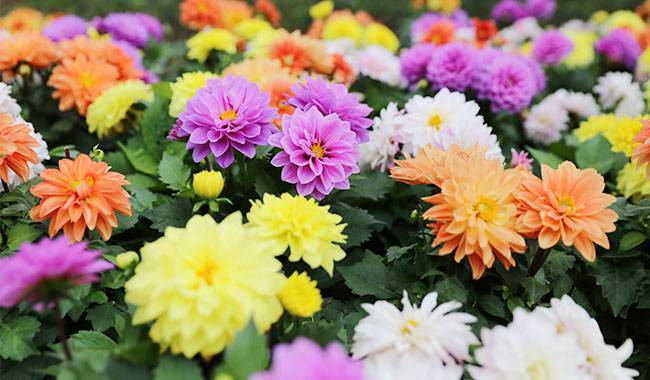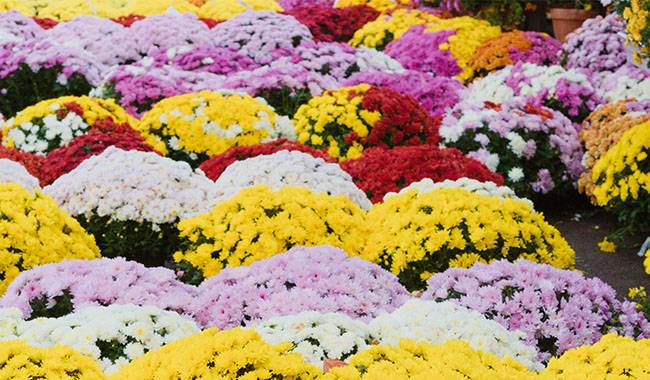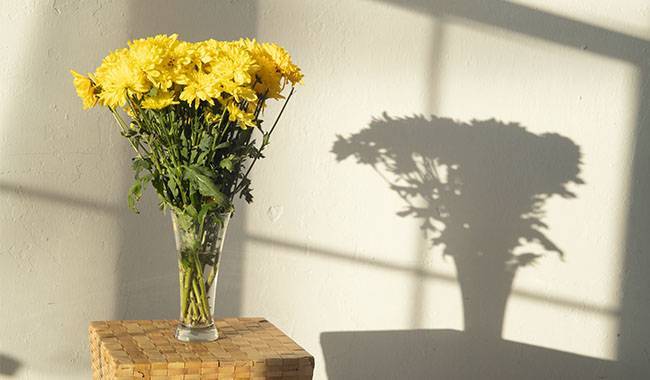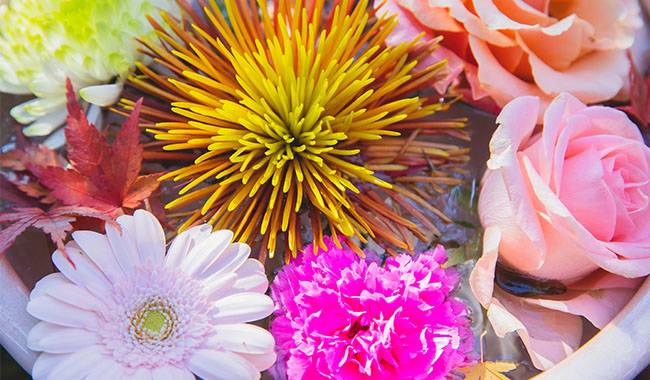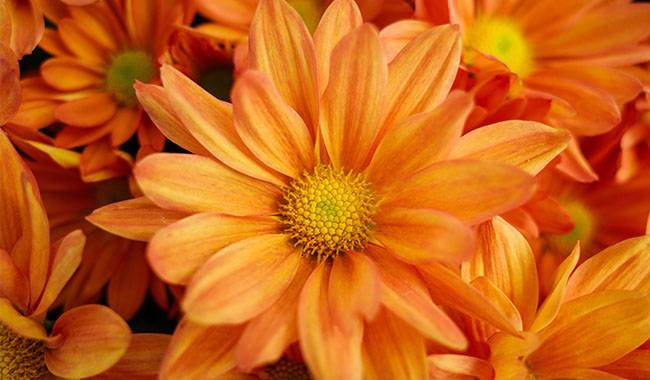
When summer ends, the chrysanthemum season begins. This beautiful flower enters its territory from September until the first frost.
Recommend you to read “How to grow mums in pots: The secrets of potted chrysanthemums“
Around the world, it is especially loved for its resistance and the diversity of its varieties. But did you know that it has many other meanings? What is a chrysanthemum is described in this article?
Symbols of chrysanthemums: China, Japan, and other countries Let’s start with the East, as Japan and China are still debating which country is the home of the plant.
In the Middle Kingdom, chrysanthemum is one of the four noble plants’ along with plum, orchid, and bamboo. It is considered the flower of October, and in autumn one can see different varieties and species on display in courtyards and squares. In China, the chrysanthemum symbolizes yin energy birth, femininity, chastity, tranquility, peace, and prosperity.
In the country of Japan, Tenjin and chrysanthemum are symbols of the same word. According to legend, the Japanese are descendants of the sun god, and the chrysanthemum became the national flower of Japan.
Until the 19th century, it could only be depicted on imperial paraphernalia as a sign of power, dignity, and honor. Today, it is a favorite of the Japanese. In September one of the country’s biggest and most beautiful holidays, the Chrysanthemum Festival is celebrated.
In the United States, flowers represent friendship and strong human bonds, but without romantic overtones. Chrysanthemums are often given to co-workers, family, and friends, and are seen as a substitute for roses, and are considered a flower for loved ones.
The chrysanthemum has a sad meaning in Italy, Belgium, Austria, and France. The flower symbolizes grief and loss. Traditionally, a bouquet of chrysanthemums is brought to the cemetery.
In Japan, white chrysanthemums are also used for funerals. But there the flower was bloomed, not to mean sadness, but to live forever.
Chrysanthemums occupy an important place in the autumn flower collection. Their bright flowers decorate gardens and flower beds until the first frost, attracting attention with their perfect shape and various shades.
Some varieties resemble daisies, while others bear a striking resemblance to dahlias, asters, and anemones. Because daisies are hardy and easy to care for, they easily take root in the ground, delighting their owners with their stunning beauty.
HISTORY OF CHRYSANTHEMUM
The original home of chrysanthemum is thought to be China, where it was cultivated as early as the first millennium B.C. and used mainly for food. Starting in the 12th century, Emperor Goba adopted the yellow 16-petaled flower as the national emblem of Japan, and it is still used today as the unofficial symbol of the Land of the Rising Sun.
And when the sign was approved as the imperial seal in 1889, the Japanese monarchy even began calling it the “Chrysanthemum Throne.
In the sixteenth century, during the period of active trade and colonial activities in Asia, the chrysanthemum spread throughout Europe, and in the mid-nineteenth century, it was brought to the Russian Empire.
The name chrysanthemum comes from the Greek word “flower of gold” because before botanists began creating hybrids, the prevalent flower was yellow with petals similar to daisies.
WHAT DO THE COLORS OF THE DAISY REPRESENT?
In the Victorian era, when certain meanings were assigned to plants, daisies did not have many shades. Consider the most popular meanings.
The yellow daisy represents easy living, wealth, prosperity, and health. It is also a symbol of passionate companionship, strength, and dignity.
With the help of red inflorescences, they propose new relationships or romantic relationships. But to identify strong feelings, these flowers are not used.
White chrysanthemums are used to emphasize the authenticity or sincerity of feelings. Present them to people who expect honesty honest and politeness.
Purple chrysanthemums are used to restore health and prolong life.
Chrysanthemums have many meanings and interpretations. By supplementing your gift with a chrysanthemum bouquet, you can tell of your loyalty and cheerfulness and show sympathy. Compose a personalized message with one of the noble flowers.
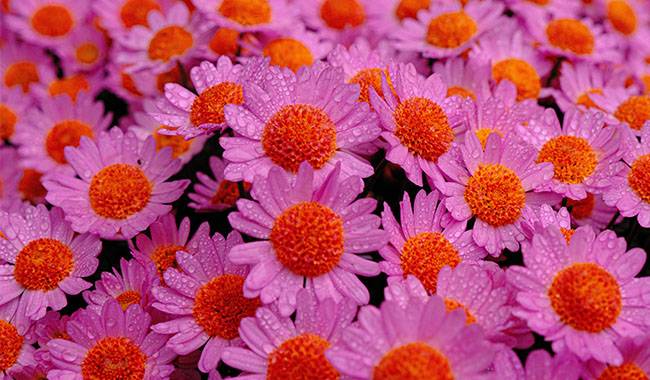
INFORMATION ABOUT CHRYSANTHEMUM
Chrysanthemum (scientific name: Dendranthema morifolium (Ramat.) Tzvelev): in plant taxonomy, it is a perennial persistent herb in the family Asteraceae and genus Chrysanthemum. There are cultivated types of Dendranthema morifolium, Dendranthema solanum, Dendranthema dahlia, Dendranthema cliff, Dendranthema artemisia, Dendranthema desk.
According to the appearance of petals, there are cultivated types such as a garden hug, receding hug, reverse hug, chaotic hug, dewy heart hug, and flying afternoon hug. The chrysanthemums in different types are also named with various species names.
Chrysanthemum is one of the top ten famous flowers in China, one of the four gentlemen of flowers (plum, orchid, bamboo, and chrysanthemum), and one of the four major cut flowers in the world (chrysanthemum, moonflower, carnation, and iris), with the highest production.
Because of the chrysanthemum’s character of being cold and proud of snow, Tao Yuanming’s famous line “Picking chrysanthemums under the eastern hedge, seeing the southern mountains at ease” was written. Chinese people have the custom of enjoying chrysanthemums and drinking chrysanthemum wine at the Chrysanthemum Festival.
Tang Meng Haoran’s “Passing by the Old Man’s Villa”: “When the day of the Chrysanthemum Festival comes, I will come back to enjoy the chrysanthemum flowers.” In ancient myths and legends, chrysanthemums were also given the meaning of good luck and longevity.
Chrysanthemum is a valuable ornamental flower that has been cultivated by artificial selection for a long time, and the ornamental chrysanthemum was introduced to Japan from China around the eighth century AD.
In the late 17th century, Dutch merchants introduced Chinese chrysanthemums to Europe, then to France in the 18th century, and to North America in the mid-19th century. Since then, Chinese chrysanthemums have spread all over the world.
GROWING ENVIRONMENT
Chrysanthemum is a short-sun plant, which can bloom early under short sunlight. Prefer sunlight, avoid shade, more drought-resistant, afraid of waterlogging. It prefers a warm and humid climate, but it can also withstand cold, and the rhizome can overwinter underground in the severe winter season.
Flowers can withstand light frosts, but seedling growth and branching buds need higher temperatures. The optimum growth temperature is about 68°F (20°C).
Chrysanthemum is very adaptable, likes to cool, more hardy, growth temperature 64-70°F(18-21°C), the highest 89°F(32°C), the lowest 50°F(10°C), underground rootstock tolerance low-temperature limit is generally 50°F(10°C).
The minimum night temperature during flowering is 62°F (17°C) and can drop to 55-59°F (13-15°C) during flowering (mid and post). Prefers full sun, but is also slightly shade tolerant. More tolerant of dryness, most avoid waterlogging.
Prefers high, dry, deep, humus-rich, easily fertile, and well-drained sandy loam soils.
It can grow in slightly acidic to neutral soils, but PH 6.2-6.7 is better. Avoid continuous crop.
Autumn chrysanthemum is a long night and day plant, with long daylight of 14.5 hours per day for nutritional growth of stems and leaves, and more than 12 hours of darkness per day with a night temperature of 212°F (100°C) for flower bud development. However, the response to sunlight varies from species to species.




